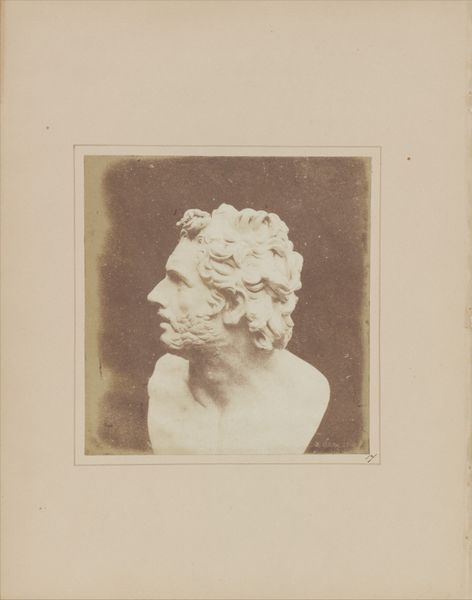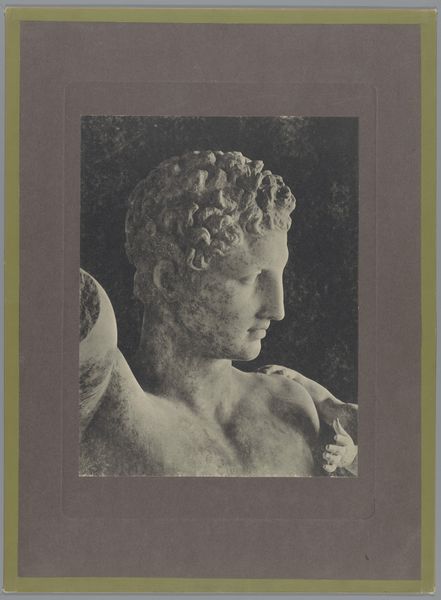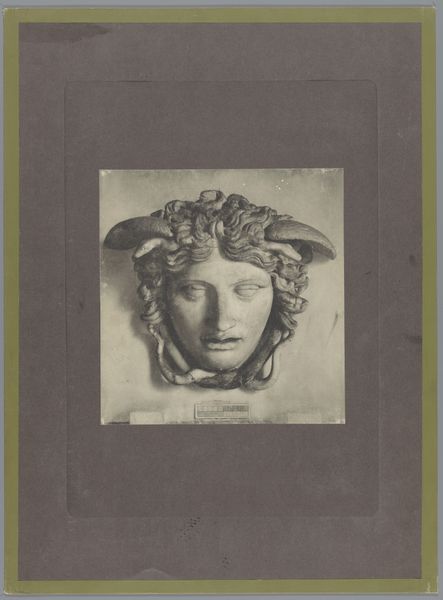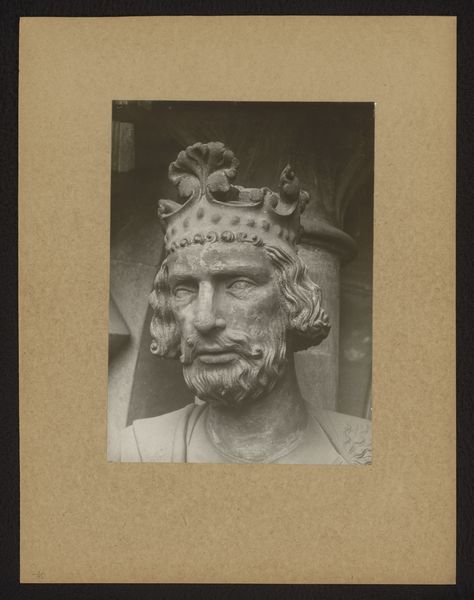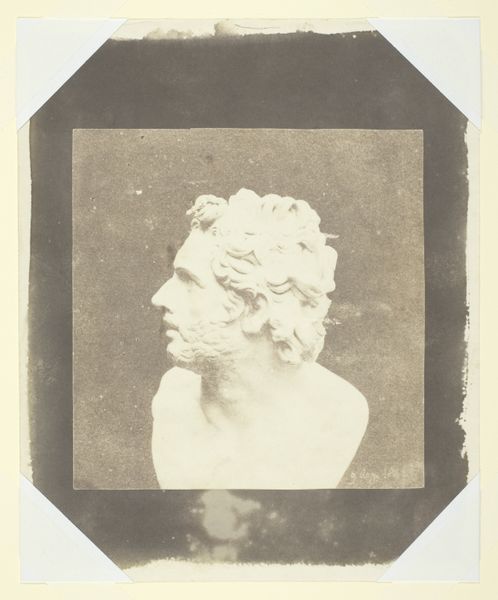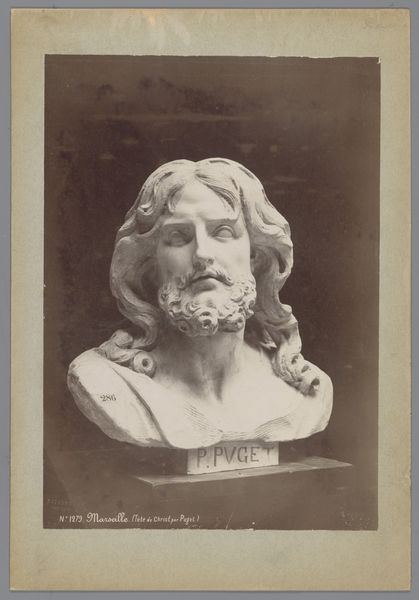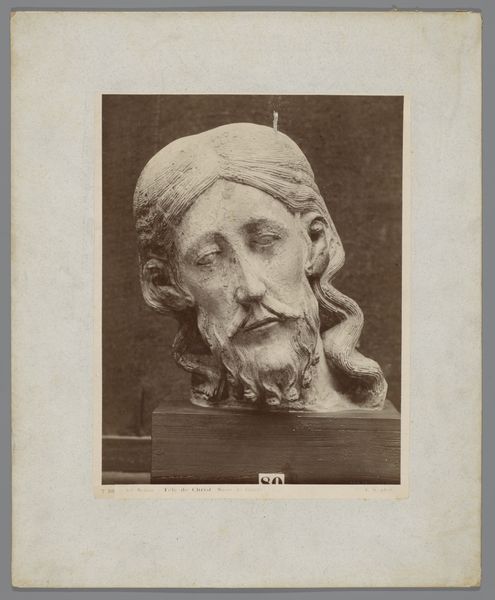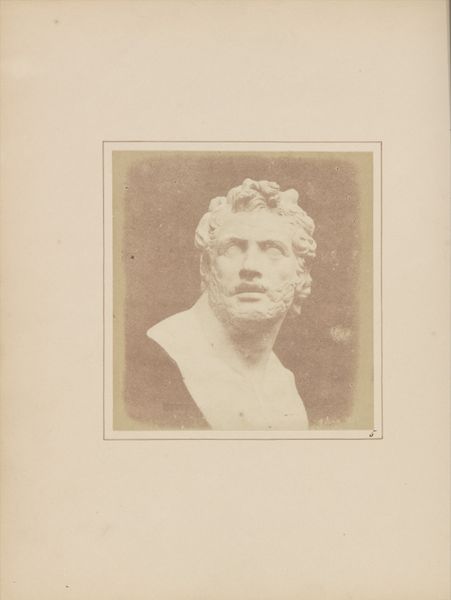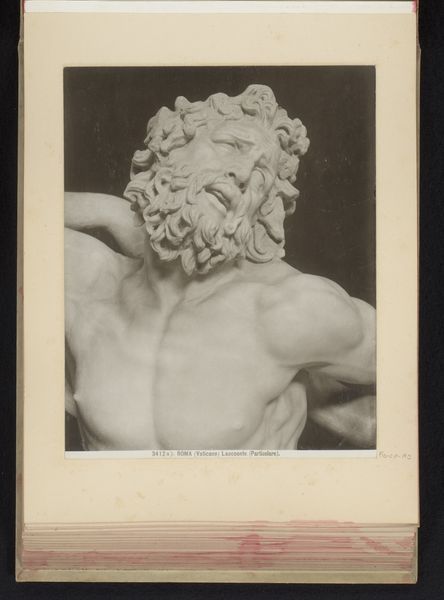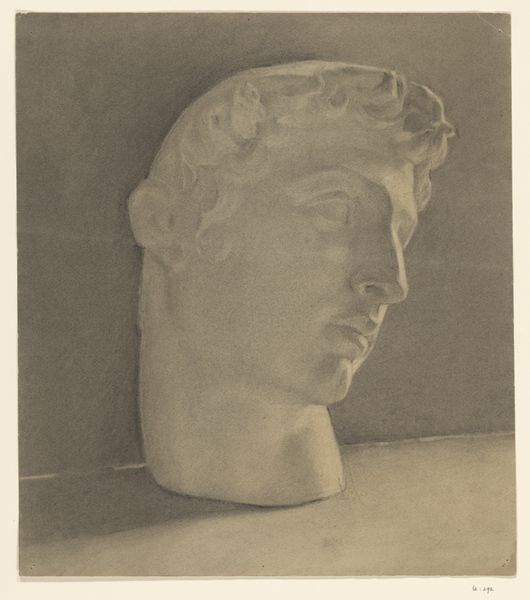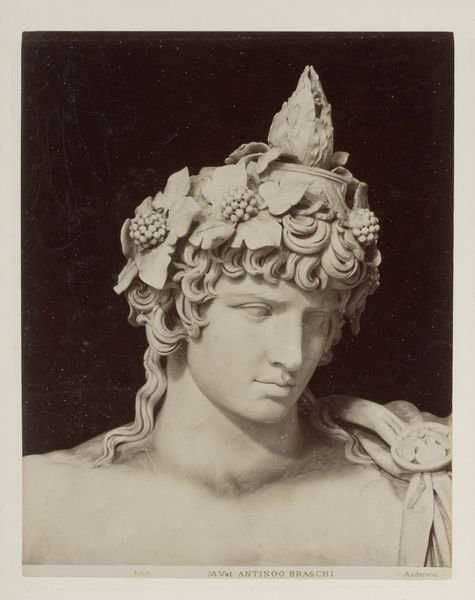
daguerreotype, photography, sculpture
#
portrait
#
still-life-photography
#
neoclassicism
#
sculpture
#
greek-and-roman-art
#
daguerreotype
#
photography
#
sculpture
Dimensions: 14.9 x 14.5 cm (5 7/8 x 5 11/16 in.)
Copyright: Public Domain
This is William Henry Fox Talbot’s "Bust of Patroclus," a salted paper print made in the early days of photography. It's essentially a photogram, an image created without a camera. Talbot placed a bust directly onto sensitized paper, then exposed it to light. The chemical reaction darkened the paper, creating a negative image. This pioneering process, which Talbot named the Calotype, allowed for multiple prints from a single negative. Look at the tonal range here, from the almost translucent highlights to the dense shadows. The texture of the paper itself contributes to the image's grainy, almost ethereal quality. In his choice of subject matter, Talbot connects photography to the history of sculpture, using a cutting-edge technology to reproduce a classical form. Talbot's experiments were driven by a scientific impulse, but the results are undeniably artistic. This photograph, a product of chemistry and light, challenges our assumptions about the distinction between art and documentation.
Comments
No comments
Be the first to comment and join the conversation on the ultimate creative platform.
